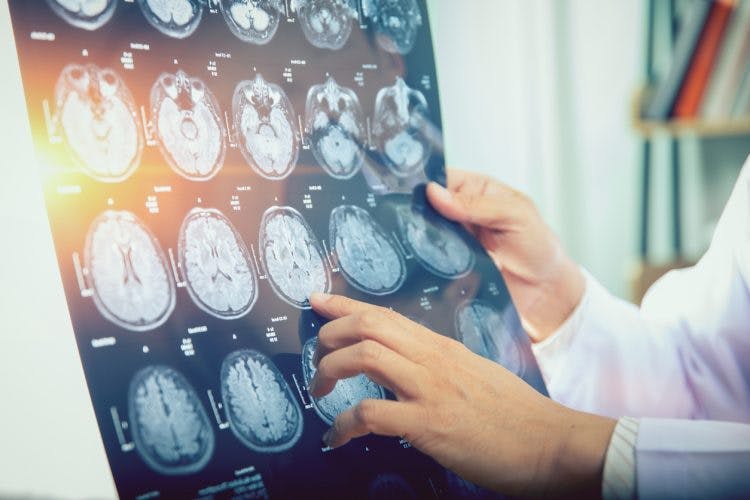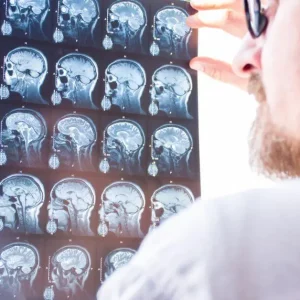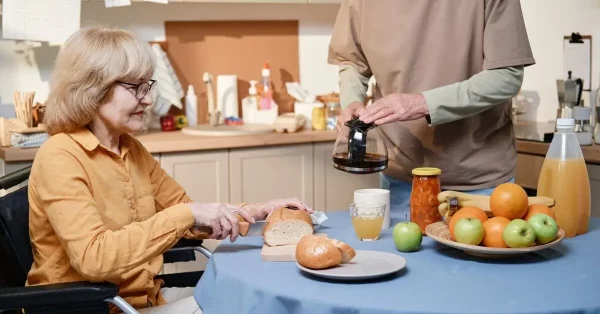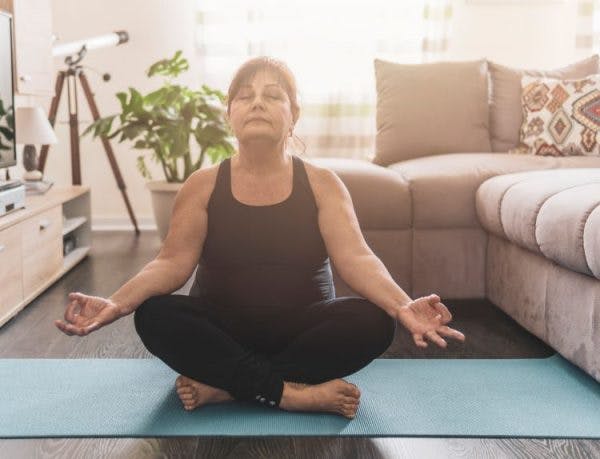Unlike typical strokes, which generally affect one hemisphere, a bilateral stroke affects both sides of the brain. When more brain tissue is affected, there are greater chances of experiencing increased post-stroke side effects. Fortunately, the rehabilitation process helps bilateral stroke survivors recover.
To help you recover from bilateral stroke, this article will explain the causes and symptoms of bilateral stroke and how it differs from typical strokes. Then, we will dig into the rehabilitation process.
What Causes Stroke on Both Sides of the Brain?
When a stroke occurs, the supply of blood in the brain becomes compromised by either a clogged or burst artery. This can be a life-threatening medical event, as brain cells require oxygen-rich blood to function. Before doctors proceed with treatment, they must know the type of stroke that is occurring.
The first and more common type is called an ischemic stroke, which occurs when a blood clot clogs an artery in the brain, cutting off the supply of blood. The second, less common type is called a hemorrhagic stroke, which occurs when an artery in the brain bursts.
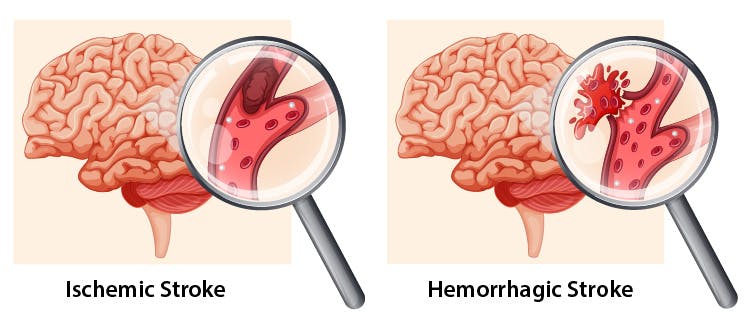
Most often, a stroke is a localized event that impacts a smallish portion of one of the brain’s two hemispheres. Each hemisphere in the brain controls movement on the opposite side of the body. For instance, a stroke in the left hemisphere may result in poor movement on the right side of the body.
However, when movement on both sides of the body is affected, it’s usually caused by multiple strokes on both sides of the brain — a bilateral stroke.
Unfortunately, diagnosis can be difficult because the typical stroke symptoms may be displayed differently. For example, instead of weakness on one side of the body (a well-known sign of stroke), both sides of the body may be affected, making the cause of the symptoms less clear.
It is also true that a bilateral stroke might not be the result of multiple strokes. Generally, each hemisphere in the brain is separate and is only attached through the corpus callosum. However, in rare cases, the frontal lobe may share blood supply between both hemispheres. When a stroke occurs in this shared area, it can also result in a rare bilateral stroke
As with all strokes, timely treatment is necessary to restore blood flow in the brain and prevent tissue damage.
How Is a Bilateral Stroke Treated?
Treatment for bilateral stroke occurs in two phases: stopping the strokes and rehabilitating the brain.
Stopping the Stroke
When ischemic stroke is involved (the type caused by a blood clot), doctors can resolve it with clot-busting drugs like aspirin or tPA (when early intervention is possible). When drugs are not sufficient (especially if too much time has passed since the onset of the stroke), doctors may use surgery to remove the clot in the brain.
Hemorrhagic stroke surgery is more rare and attempts to repair the ruptured artery and may also relieve swelling in the brain.
It’s important to know that hemorrhagic stroke is not treated with clot-busting drugs because it would only make the bleeding in the brain worse. For this reason, no one should self-administer aspirin for stroke symptoms. While aspirin may help ischemic stroke, it would only worsen the bleeding during a hemorrhagic stroke. This is why doctors must diagnose the type of stroke before swiftly beginning treatment.
Rehabilitating the Brain
Once the stroke has been treated and blood flow is restored in the brain, there is good news and bad news. The bad news is that brain damage is irreversible, and the brain cells that died during the stroke cannot come back. The good news is that the brain is resilient and other neurons can adapt and make connections to take over functions of the lost cells. This rewiring process is called neuroplasticity.
Neuroplasticity allows new areas of the brain to take on lost function. For instance, if speech has become impaired after a bilateral stroke, new areas of the brain can learn to control speech. However, this process requires hard work from the survivor, which is facilitated during rehabilitation.
What Side Effects Can Occur After Bilateral Stroke?
At the beginning of rehabilitation, your medical team will work to diagnose any post-stroke side effects you are experiencing.
Your neurologist is a great resource for understanding the effects of your stroke. They can provide information about which areas of the brain were affected by stroke. This is helpful in understanding your symptoms since each area of the brain controls different functions.
For instance, if the left hemisphere is affected, a person may struggle with language difficulties. This is because the language center of the brain resides predominantly in the left hemisphere.
Because a bilateral stroke affects both sides of the brain, there is a wide diversity of side effects that may occur, such as:
- Language difficulties like aphasia or apraxia of speech
- Movement difficulties on both sides of the body, such as weakness or paralysis
- Cognitive impairments such as poor memory or difficulty with problem-solving
- Dysphagia (difficulty swallowing)
- Sensory issues such as numbness, tingling, or post-stroke pain
The side effects that occur after a bilateral stroke vary greatly between survivors. Every brain is wired differently, and every stroke is different. This means there are an endless number of ways that a brain can be affected by a stroke.
For this reason, you must work closely with your medical team to determine which post-stroke side effects you want to address first and create a rehabilitation plan to follow.
The Rehabilitation Process
Rehabilitation focuses on restoring the survivor’s abilities that were compromised by the stroke. For instance, if speech was impaired by the stroke, rehabilitation focuses on improving the survivor’s ability to communicate.
Fortunately, neuroplasticity makes recovery possible. It requires consistent effort on the survivor’s part, as the brain relies on experience to rewire itself. In other words, when a stroke survivor engages in an activity on a regular basis, that is what the brain will adapt to.
For instance, when speech therapy exercises are practiced regularly, the brain responds by strengthening the pathways that control speech. This continued experience is how rehabilitation works after a bilateral stroke, or any other type of stroke.
Here are some of the methods that might be used during rehabilitation:
- Physical therapy. After a bilateral stroke, mobility on both sides of the body often becomes impaired. Rigorous stroke rehabilitation can help improve this side effect.
- Passive exercise. If a bilateral stroke results in post-stroke paralysis, then passive exercise can help improve mobility and encourage blood flow in the affected limbs. This can be accomplished by having a caregiver assist your body parts with various movements.
- Speech therapy. Survivors can work with experts called Speech Language Pathologists to regain communication, cognitive, and swallowing skills.
- Occupational therapy. Sometimes, a severe stroke can impact a person’s ability to lead an independent life. Occupational therapists are trained to help survivors regain independence with activities of daily living.
The brain needs a lot of stimuli to adapt and rewire, so rehabilitation must occur beyond your time with the professionals. This means you can continue to recover from the comfort of your home with various home therapy programs like FitMi or the MusicGlove. These provide the opportunity for repetition of movements, which enables your brain to recover from a bilateral stroke. Work with your therapists to create a rehabilitation plan that targets your unique needs and goals.
Hope for Recovery from Bilateral Stroke
Bilateral stroke is a rare event that can occur from multiple strokes on both sides of the brain or a unique instance where a stroke in one vessel impairs both hemispheres.
Fortunately, there is hope for recovery. By participating in rigorous therapy, you can rehabilitate your body and mind, and help minimize other side effects that may have occurred.
Work closely with your doctors and therapists to come up with a treatment plan that’s suited to your unique needs. Best of luck on the road to recovery.

